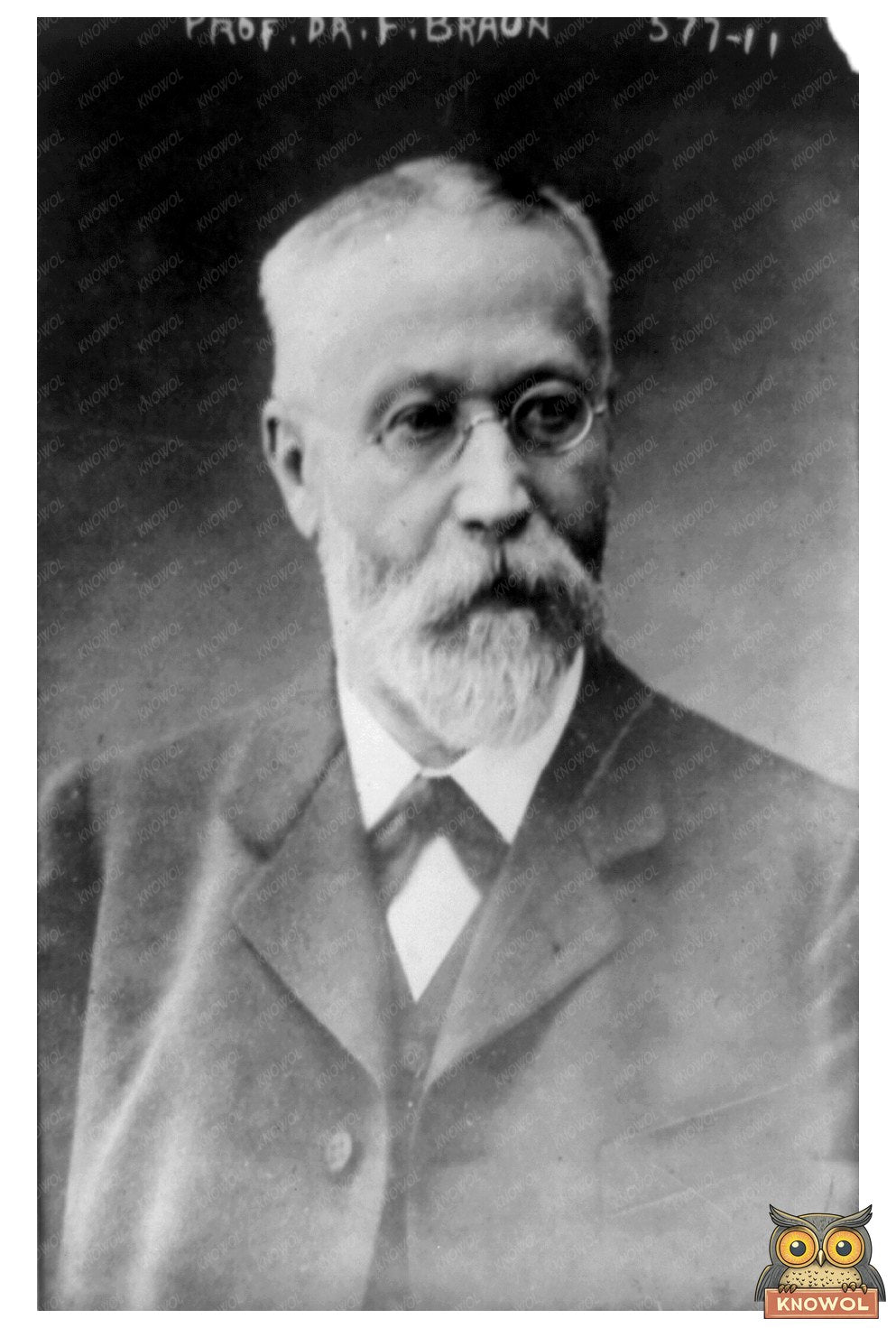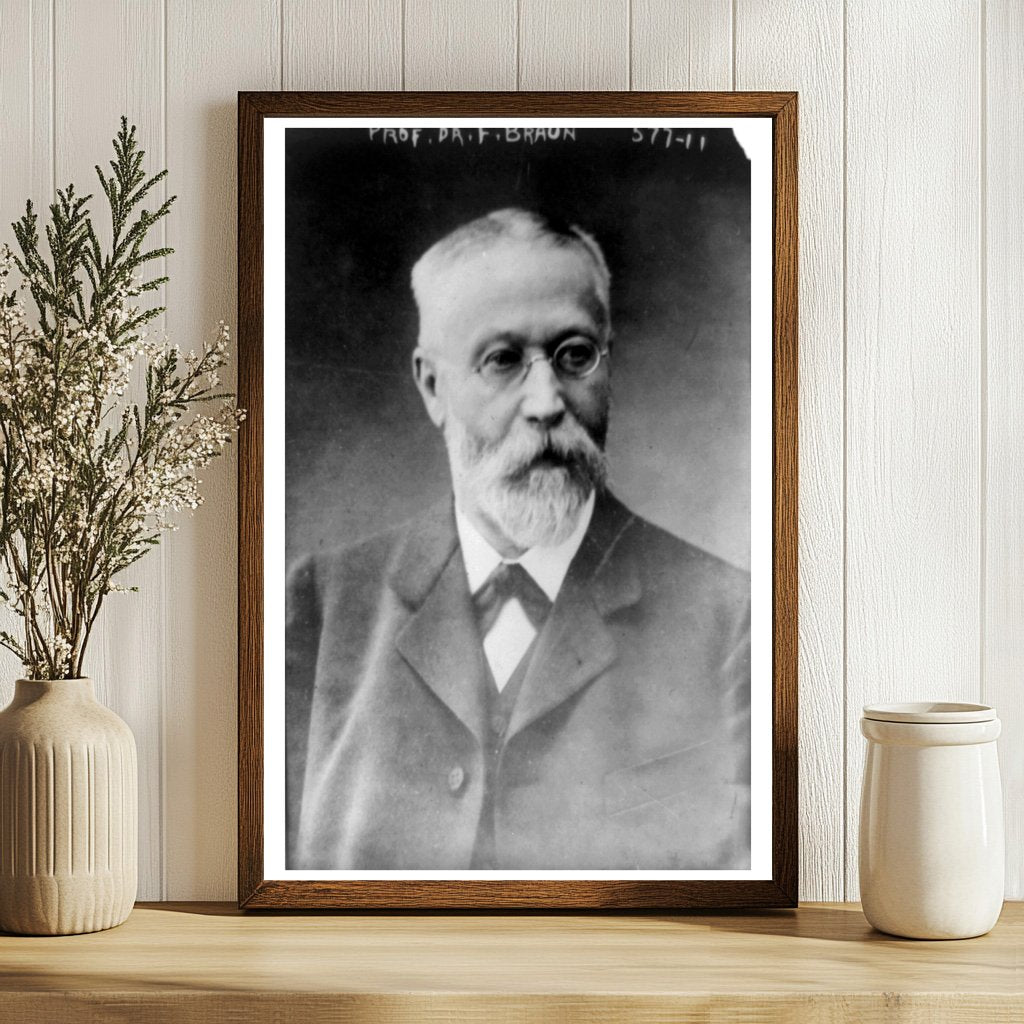


Visionary Electrical Engineer, 1910 Portrait
This head-and-shoulders portrait of Dr. Ferdinand Braun was captured on January 7, 1910, showcasing a key figure in the field of electrical engineering. Born in 1850 in Fulda, Germany, Braun made significant contributions to the development of radio technology and the cathode ray tube. His innovations laid the groundwork for modern electronics, enabling advancements that would transform communication and display technologies.
Dr. Brauns most notable achievement is the invention of the crystal receiver, which became a crucial component in early radio sets. His work in creating the Braun tube (the early cathode ray tube) also played a pivotal role in the evolution of television and radar. He received the Nobel Prize in Physics in 1909, sharing it with Guglielmo Marconi, in recognition of their contributions to wireless telegraphy. Brauns efforts helped establish the foundations of what would become the wireless communication revolution.
This photograph serves as a historical record of a man who not only advanced technology but also influenced the way we connect and communicate today. Stored in a government archive, it represents a moment in time when technological innovation was dramatically shaping the world, leaving a legacy that continues to impact our daily lives.

Visionary Electrical Engineer, 1910 Portrait
